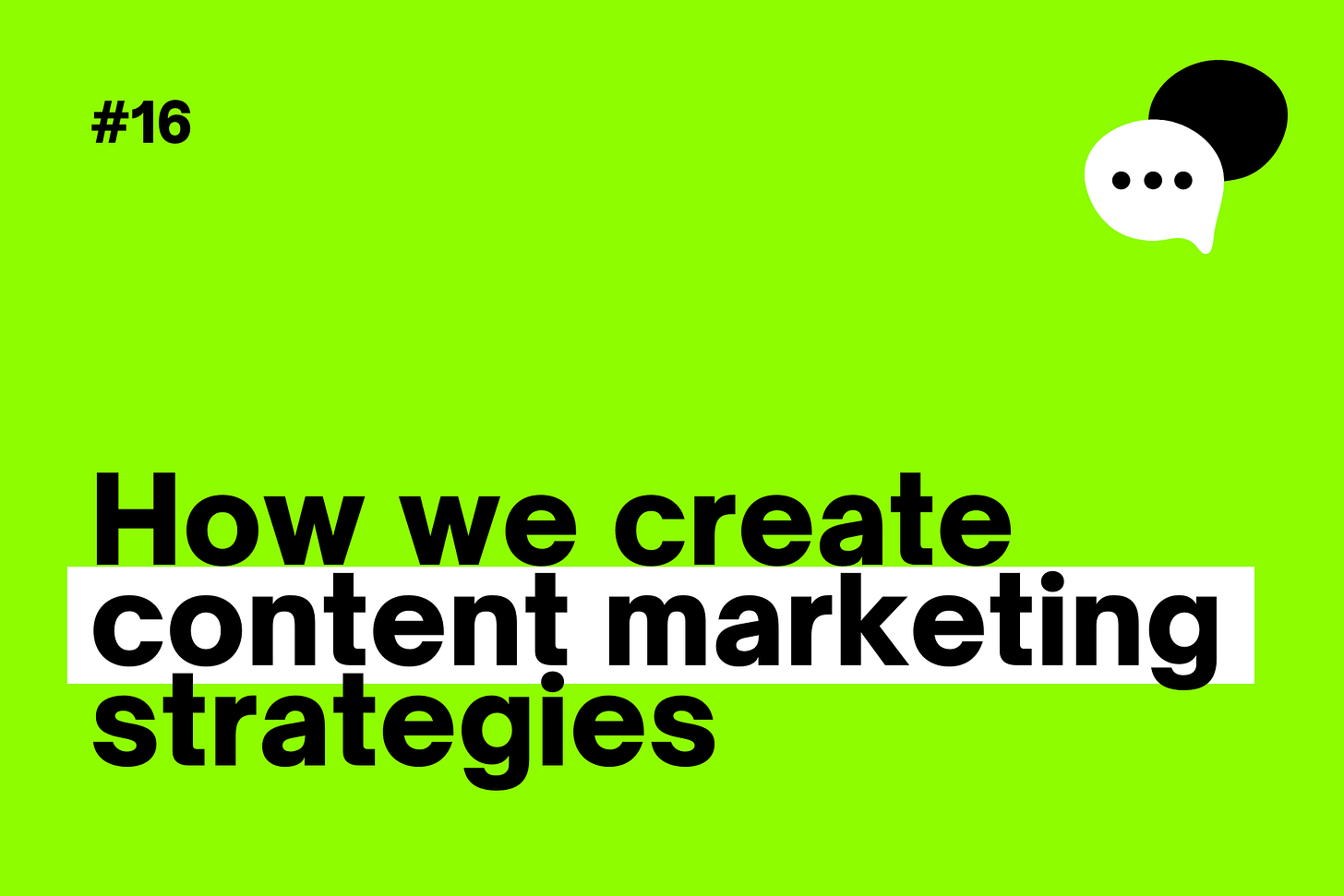How we create content marketing strategies for B2B climate tech companies
Six steps to a unique content strategy
Hello friends,
Wondering how climate tech companies go about content?
Today we’re walking you through how we create content strategies for our clients. There’s no universal template I rely on, but we’ll show you the various inputs we consider, and how we balance these for a final output.
But first, we want to know….
What do you want to know about your customers?
In the coming weeks and months, Meg and I will be interviewing corporate sustainability professionals to find out more about what it’s like to work on the ‘other side’.
Before we do, we’d love to hear from you: what would you like us to ask? What would you like to find out about your target audience?
Hit reply and let us know.
1. Understand the company and their goals.
This immersion process should involve a deep-dive session with every key member of your team. This is less about us trying to understand your business and more about us understanding the different personalities, perspectives, and stories we can tell. This is the best way to know that we’ve covering all basis.
Best people to meet with: founders, science team, product team.
2. Understand the target audiences
We can’t write content without knowing exactly who we’re writing for. In this step, we’ll work with marketing and/or leadership to identify who we’re speaking to and what their problems are. Some companies have a single target audience, but most have multiple ICPs.
Some of the content we create will be more broadly targeted, but most will be specifically designed to address a particular subset of your audience, so it’s critical that we understand these groups in detail.
Best people to meet with: sales team, always. They know how much our target audience knows, what questions they have, and common objections.
3. Find the content baseline
With a comprehensive data dump of the company story and the kinds of narratives we could tell, the next thing we’ll do is check out what they’ve written already. Ideally, I’m checking analytics (across website and socials) to see:
→ which content performed best in the past
→ where the traffic is coming from.
This doesn’t mean we’ll just go ahead with whatever worked in the past; it’s just another insight to feed into the machine.
The traffic part is critical, because unless we know how we’ll drive people to the content we’re planning on producing, what’s the point in creating it? We’re not writing a diary.
4. Check competitors
Then we’ll see if we can glean any insights from what competitors are producing. For longer-form content, like articles and downloadable resources, it’s impossible to say whether this content is doing well for them, but we can still see:
→ how they’re presenting ideas and speaking to target audiences.
→ how we can differentiate our own content.
Social analytics are fairly transparent, giving us a better idea of the kinds of content that is resonating with competitors’ audiences. What performs well on social may differ from longer-form content, but again – it’s another input for the machine.
5. Find what’s unique
Our SME deep dives will typically expose us to the unique voices and perspectives that make up your team, which will go a long way in making sure our thought leadership content sounds different and original in the market.
We’ll also be looking for other ways we can create content that only your brand can create – whether that’s tapping into your unique data collected on your platform, leaning into your founders’ or key team members’ backgrounds or profiles, or even leveraging your product to create a new kind of content.
6. Identify content ‘pillars’ or storylines
When the dust settles on our SME deep dives, typically a handful of key themes, concepts, or storylines will emerge. These become our key storylines we’ll use for thought leadership content. Often I’ll find that a particular theme or story ‘belongs’ with a particular person, so they will become the go-to source for that pillar.
We’ll plug these pillars into a spreadsheet to form the basis of a content plan — but we’re not done yet. With our pillars in place, we can generate any number of content ideas by referring back to competitor content, notes from our SME sessions, and diving into proprietary data.
To turn the content plan into an editorial calendar, we’ll also look at upcoming events to see what we can leverage for additional engagement. For example, if one of our pillars is about the scope 3 accounting, and we’ve got COP29 around the corner (if that sounds premature, just blink and it will be here), we’ll see what kind of hook we can create that combines both.
We’ll also map our key storylines across the customer journey and make sure we’re producing a balance of content across the bottom, middle, and top of our marketing funnel. This means creating content across a spectrum of subject matters that will appeal across different stages of the funnel, but also creating different content formats (i.e. downloads vs. social media) to move leads along the digital traffic funnel.
And then…
We get to work. With a three-month content calendar in place, now it’s time to do the real work.
At this point you might be wondering:
But what about keywords?
The above process applies mostly to thought leadership content, which we recommend most brands focus most of their content resources on.
If SEO is top of your agenda, we’re addressing that in next week’s newsletter, so stay tuned.



